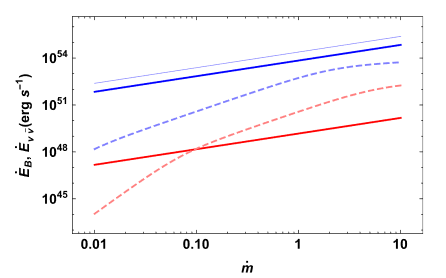A hyperaccreting stellar-mass black hole has been proposed as the candidate central engine of gamma-ray bursts (GRBs). The rich observations of GRBs by Fermi and Swift make it possible to constrain the central engine model by comparing the model predictions against data. In this paper we have studied the temporal evolution of the central engine parameters for both the prompt emission and afterglow phases. We consider two jet-launching mechanisms, i.e., neutrino - antineutrino annihilations and the Blandford–Znajekprocess, and obtain analytical solutions to these two models. We then investigate the BH central engine parameters, such as the jet power, the dimensionless entropy η, and the central engine parameter μ0 = η (1 + σ0) (where σ0 is the initial magnetization of the engine) at the base of the jet. The black hole may be spun up by accretion or spun down by the Blandford–Znajek process, leaving imprints in the GRB light curves. Usually, a Blandford–Znajek jet is more powerful and is likely responsible for the late-time central engine activities. However, an initially non-spinning black hole central engine may first launch a thermal “fireball” via neutrino annihilations, and then launch a Poynting-flux-dominated jet via the Blandford–Znajek process. Multiple flares, giant bumps, and plateaus in GRB afterglows can be produced as the result of late-time accretion onto the black hole. 
Fig. 1 Magnetic power ĖB as a function of accretion rate for different black hole spins, a•=0.01 (thick red solid line) and 0.99 (thick blue solid lines). The dashed lines show the neutrino-annihilation power Ėνν for a•=0.01 (red dashed line) and 0.99 (blue dashed line). The thin blue line is produced with the analytic expression of Tchekhovskoy et al. (2011) for a•=0.99. This paper was published in the Astrophysical Journal (2017, ApJ, 849, id.47).Detailed information of the paper can be found at: http://adsabs.harvard.edu/abs/2017ApJ...849...47L |

